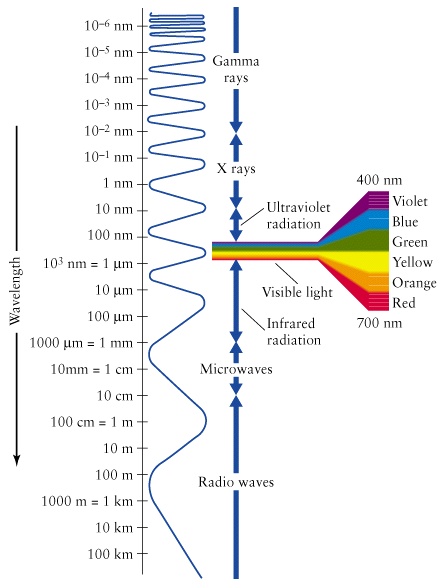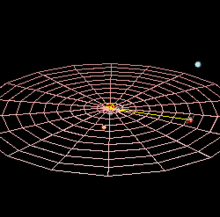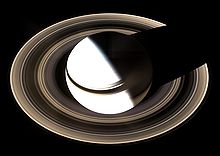What is a photon, and what does it look like? It is too small to see. It is smaller than an atom, which is too small to see, smaller than a proton or a neutron, smaller than an electron. We see it as light as it leaves the sun, and as a beam of light from a torch.
Even though it is to small to see, it is useful to have a picture of what it may be like in one's mind, so one can imagine how it may travel.

What wavelength goes with which colour?
Our eyes are sensitive to light which lies in a very small region of the electromagnetic spectrum labeled "visible light". This "visible light" corresponds to a wavelength range of 400 - 700 nanometers (nm) and a color range of violet through red. The human eye is not capable of "seeing" radiation with wavelengths outside the visible spectrum. The visible colors from shortest to longest wavelength are: violet, blue, green, yellow, orange, and red. Ultraviolet radiation has a shorter wavelength than the visible violet light. Infrared radiation has a longer wavelength than visible red light. The white light is a mixture of the colors of the visible spectrum. Black is a total absence of light.
Earth's most important energy source is the Sun. Sunlight consists of the entire electromagnetic spectrum.

In 1900, Max Planck was working on black-body radiation and suggested that the energy in electromagnetic waves could only be released in "packets" of energy. In his 1901 article [4] in Annalen der Physik he called these packets "energy elements". The word quanta (singular quantum) was used even before 1900 to mean particles or amounts of different quantities, including electricity. Later, in 1905 Albert Einstein went further by suggesting that electromagnetic waves could only exist in these discrete wave-packets.[5] He called such a wave-packet the light quantum (German: das Lichtquant). The name photon derives from the Greek word for light, φως (transliterated phôs), and was coined[Note 1] in 1926 by the physical chemist Gilbert Lewis, who published a speculative theory in which photons were "uncreatable and indestructible".[6] Although Lewis' theory was never accepted as it was contradicted by many experiments, his new name, photon, was adopted immediately by most physicists. Isaac Asimov credits Arthur Compton with defining quanta of energy as photons in 1923.[7][8]
In physics, a photon is usually denoted by the symbol γ (the Greek letter gamma). This symbol for the photon probably derives from gamma rays, which were discovered in 1900 by Paul Villard,[9][10] named by Ernest Rutherford in 1903, and shown to be a form of electromagnetic radiation in 1914 by Rutherford and Edward Andrade.[11] In chemistry and optical engineering, photons are usually symbolized by hν, the energy of a photon, where h is Planck's constant and the Greek letter ν (nu) is the photon's frequency. Much less commonly, the photon can be symbolized by hf, where its frequency is denoted by f.
My preference is to imagine that a photon looks like a donut, which is a torus. More about that on the next page. It is said, every electromagnetic frequence comes from the sun, (any sun, and there are millions in our galagy alone, but that if we imagine the visible spectrum (what we can see with our eyes), as the seven notes on th piano keyboard and lined up all the others, the keyboard would reach from the earth to the sun. I'm not certain whether that is an accurate representation, but there is a lot we know is there, but can't define. Some people even refer to this as "dark matter". That is not quite accurate. Dark matter is matter that neither emits nor scatters electromagnetic radiation, but could represent over 80% of teh matter in teh universe which constitutes its mass. My theory contributes at least 50% more matter to the universe, so could account for half of this. (more)




In astronomy and cosmology, dark matter is matter that neither emits nor scatters light or other electromagnetic radiation, and so cannot be directly detected via optical or radio astronomy.[1] Dark matter is believed to constitute 83% of the matter in the universe and 23% of the mass-energy.[2]
Dark matter was postulated by Fritz Zwicky in 1934 to account for evidence of "missing mass" in the orbital velocities of galaxies in clusters. Subsequently, other observations have indicated the presence of dark matter in the universe; these observations include the rotational speeds of galaxies, gravitational lensing of background objects by galaxy clusters such as the Bullet Cluster, and the temperature distribution of hot gas in galaxies and clusters of galaxies. Though the existence of dark matter is generally accepted by the mainstream scientific community, some alternative theories to explain the anomalies that dark matter is intended to solve have been proposed.